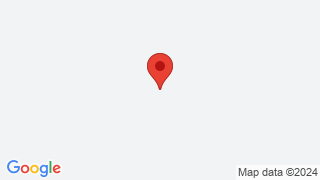Fernandina Island






Fernandina Island or Narborough
Galapagos ´ Fernandina Island
The island is a layer of the active volcano that last erupted in August 2007. The island was formed by the Galapagos hot spot. The southern flank of the volcano had an eruption that generated flows, which decreased with the hours.
This is the youngest, more western island in the archipelago. It was named after King Ferdinand of Spain, who sponsored Christopher Columbus' journey. On February 14, 1825, while anchoring in the Bay of Banks, Captain Benjamin Morrell recorded one of the largest eruptions in the Galapagos history, the Fernandina Volcano eruption. During this event, his ship was put to safety and his story was preserved.
Fernandina Galapagos
Fernandina has an area of 642 km2 and an altitude of 1,476 meters (4,842 feet), with a boiler about 6.5 km wide. The boiler collapsed in 1968, when its floor parts fell 350 meters down. Most recently, in 1988, a small lake has intermittently occupied the floor of the northern caldera.
Due to the recent volcanic activity, the island does not have much visitors and the environment has turned to grey; many of them are taken to Fernandina Island only to see the crater slops, for safety reasons.
Punta Espinoza, located on the north-east coast of the island, is a narrow strip of land where hundreds of marine iguanas gather together in large groups to rest on black lava rocks. The famous non-flying Cormorant inhabits this island as well as penguins, pelicans and sea lions. Also in this island, two types of lava flows and mangroves can be observed.
Galapagos´ Fernandina Island or Narborough (in English), is named in honor of King Ferdinand, the Catholic, who sponsored Columbus ‘voyage to America; and its name in English, is in honor of Sir John Narborough.
This island is the third largest in the Archipelago, after Isabela and Santa Cruz islands and one of the most active volcanoes in the world is located on its territory.
It is the most recent and westernmost islands of the archipelago. On April 11, 2009 a new eruptive process began and formed a cloud of ash and water vapor with pyroclastic flows that descended through the slopes of the volcano, until it reached the sea.
The only site to visit is Punta Espinoza, where you can observe the highest concentration of marine iguanas, as well as non-flying cormorants, sea lions, penguins, crabs, lava lizards, Galapagos hawks and mangrove forests.
Fernandina Island Ecuador
Location
It is located on the west side of Isabela Island.
Extension
It has an approximate extension of 642 km2.
Weather
On the subtropical floor predominates dry climates.
Wildlife
This island is inhabited by marine and aquatic animals, such as: Marine iguanas, flightless cormorants’ colonies, sea lions, penguins, sayapas crabs, lava lizards and Galapagos hawks.
Penguins are the real attraction of this island.
Flora
Its vegetation is very unique, it has lava and certain areas with dry vegetation, which includes the Palo Santo tree, a white trunk that remains leafless and looks dead for most of the year, only on the wet season it comes back to life and leaves come out.
Mangrove areas are also found.
Tourist activities
- Boat ride: A boat ride will take us to observe penguins and flying cormorants, and then disembark we´ll have one-mile walk.
- The Summit volcano: It reaches 1476 meters, with an opening in the crater of approximately 6.5 km wide. Visitors can only appreciate the surroundings of this volcano for their safety. It erupted for the last time in April 2009.
- Marine iguanas: They are an important part of Fernandina Island and it is really a sight to see them change their colors from dark green to amazing blue and red during their breeding season.
- Punta Espinoza: has a fantastic combination of new lava rocks and lots of animal life. Since there are no introduced mammals in Fernandina, it is a unique area with very high biodiversity.

Publicado en:
Publicado por:






